Electrochemical Noise Response of Cr2Nb Powders Applying Mechanical Alloying
Abstract
:1. Introduction
2. Materials and Methods
3. Results and Discussion
4. Conclusions
Author Contributions
Funding
Institutional Review Board Statement
Informed Consent Statement
Data Availability Statement
Acknowledgments
Conflicts of Interest
References
- Xue, Y.; Li, S.; Wu, Y.; Liu, H.; Li, K. The improved strength and toughness in the quinary Cr2Nb/Cr in-situ composite. J. Alloy. Compd. 2020, 825, 153957. [Google Scholar] [CrossRef]
- Shayesteh, P.; Mirdamadi, S.; Razavi, H. Study the effect of mechanical alloying parameters on synthesis of Cr2Nb-Al2O3 nanocomposite. Mater. Res. Bull. 2014, 49, 50–57. [Google Scholar] [CrossRef]
- Liu, C.T.; Tortorelli, P.F.; Horton, J.A.; Carmichael, C.A. Effects of alloy additions on the microstructure and properties of CrCr2Nb alloys. Mater. Sci. Eng. A 1996, 214, 23–32. [Google Scholar] [CrossRef]
- Xiao, X.; Lu, S.-q.; Hu, P.; Huang, M.-g.; Fu, M.W. Effect of ball milling time on microstructure and properties of Laves phase NbCr2 alloys synthesized by hot pressing. Trans. Nonferrous Met. Soc. China 2009, 19, 545–551. [Google Scholar] [CrossRef]
- Shao, W.; Wang, W.; Zhou, C. Deposition of a B-modified silicide coating for Nb-Si based alloy oxidation protection. Corros. Sci. 2016, 111, 786–792. [Google Scholar] [CrossRef]
- Kumar, S.; Jyothirmayi, A.; Wasekar, N.; Joshi, S.V. Influence of annealing on mechanical and electrochemical properties of cold sprayed niobium coatings. Surf. Coat. Technol. 2016, 226, 124–135. [Google Scholar] [CrossRef]
- Abdo, H.; Samad, U.A.; Mohammed, J.; Ragab, S.; Seikh, A. Mitigating Corrosion Effects of Ti-48Al-2Cr-2Nb Alloy Fabricated via Electron Beam Melting (EBM) Technique by Regulating the Immersion Conditions. Crystals 2021, 11, 889. [Google Scholar] [CrossRef]
- Chen, C.; Zhang, J.; Duan, C.; Feng, X.; Shen, Y. Investigation of Cr-Al composite coatings fabricated on pure Ti substrate via mechanical alloying method: Effects of Cr-Al ratio and milling time on coating, and oxidation behavior of coating. J. Alloy. Compd. 2016, 660, 208–219. [Google Scholar] [CrossRef]
- Antão, F.; Martins, R.; Correia, J.B.; da Silva, R.C.; Gonçalves, A.P.; Tejado, E.; Pastor, J.Y.; Alves, E.; Dias, M. Improvement of Mechanical Properties with Non-Equimolar CrNbTaVW High Entropy Alloy. Crystals 2022, 12, 219. [Google Scholar] [CrossRef]
- Chen, C.; Duan, C.; Li, Y.; Feng, X.; Shen, Y. Effects of Cu content on the microstructures and properties of Cr-Cu composite coatings fabricated via mechanical alloying method. Powder Technol. 2015, 227, 36–46. [Google Scholar] [CrossRef]
- Khanra, G.; Jha, A.K.; Girikumar, S.; Tharian, K.T.; Kumar, S. Processing of Cr2Nb precursor through powder metallurgy route. Powder Technol. 2010, 197, 177–183. [Google Scholar] [CrossRef]
- Jacob, A.; Schmetterer, C.; Grüner, D.; Wessel, E.; Hallstedt, B.; Singheiser, L. The Cr-Fe-Nb ternary system: Experimental isothermal sections at 700 °C, 1050 °C and 1350 °C. J. Alloy. Compd. 2015, 648, 168–177. [Google Scholar] [CrossRef]
- Fiji Distribution of ImageJ. Available online: https://imagej.net/Fiji (accessed on 19 February 2022).
- Stein, F.; Leineweber, A. Laves phases: A review of their functional and structural applications and an improved fundamental understanding of stability and properties. J. Mater Sci. 2020, 56, 5321–5427. [Google Scholar] [CrossRef]
- Ma, X.; Guo, X.; Fu, M. HRTEM observation of silicides and Laves phase precipitates in Nb-Ti-Si based alloys. Int. J. Refract. Met. Hard Mater. 2019, 78, 138–145. [Google Scholar] [CrossRef]
- Ng, C.-H.; Yin, S.; Lupoi, R.; Nicholls, J. Correlation between flattening ratio and wear performance of cold sprayed metal matrix composite coatings. Mater. Lett. 2021, 283, 128773. [Google Scholar] [CrossRef]
- Zhong, W.; Mouche, P.; Heuser, B.J. Response of Cr and Cr-Al coatings on Zircaloy-2 to high temperature steam. J. Nucl. Mater. 2018, 498, 137–148. [Google Scholar] [CrossRef]
- Liu, C.T.; Zhu, J.H.; Brady, M.P.; McKamey, C.G.; Pike, L.M. Physical metallurgy and mechanical properties of transition-metal Laves phase alloys. Intermetallics 2000, 8, 1119–1129. [Google Scholar] [CrossRef]
- Arce-Colunga, U.; Reyes-Valdes, F.A.; Martínez-Villafañe, A.; Orozco-Carmona, V.M.; Almeraya-Calderon, F.; Saucedo-Acuña, R.A.; de la Torre, S.D. High Temperature Oxidation of Cr-ZrO2-Al2O3 Composites. ECS Trans. 2006, 27, 9–15. [Google Scholar]
- Zhang, H.; Liu, Y.; Chen, X.; Zhang, H.; Li, Y. Microstructural homogenization and high-temperature cyclic oxidation behavior of a Ni-based superalloy with high-Cr content. J. Alloy. Compd. 2017, 727, 410–418. [Google Scholar] [CrossRef]
- Shao, W.; Zhou, C. Oxidation behavior of the B-modified silicide coating on Nb-Si based alloy at intermediate temperatures. Corros. Sci. 2018, 132, 107–115. [Google Scholar] [CrossRef]
- Gui, W.; Liang, Y.; Hao, G.; Lin, J.; Sun, D.; Liu, M.; Liu, C.; Zhang, H. High Nb-TiAl-based porous composite with hierarchical micro-pore structure for high temperature applications. J. Alloy. Compd. 2018, 744, 463–469. [Google Scholar] [CrossRef]
- Dong, J.; Li, C.; Liu, C.; Huang, Y.; Yu, L.; Li, H.; Liu, Y. Hot deformation behavior and microstructural evolution of Nb-V-Timicroalloyed ultra-high strength steel. J. Mater. Res. 2017, 705, 249–256. [Google Scholar]
- Park, S.A.; Ji, W.S.; Kim, J.G. Effect of Chromium on the Corrosion Behaviour of Low-Alloy Steels Containing Copper in FGD Environment. Int. J. Electrochem. Sci. 2013, 8, 7498–7509. [Google Scholar]
- Lee, H.J.; Lee, H.W. Effect of Cr Content on Microstructure and Mechanical Properties of Low Carbon Steel Welds. Int. J. Electrochem. Sci. 2015, 10, 8028–8040. [Google Scholar]
- Vukićević, N.M.; Cvetković, V.S.; Jovanović, L.S.; Stevanović, S.I.; Jovićević, J.N. Alloy Formation by Electrodeposition of Niobium and Aluminium on Gold from Chloroaluminate Melts. Int. J. Electrochem. Sci. 2017, 12, 1075–1093. [Google Scholar] [CrossRef]
- Meng, Q.; Lu, X.; Zhang, B.; Gu, Y.; Ren, G.; Huang, X. Research on the ROI registration algorithm of the cardiac CT imagetime series. Biomed. Signal Process. Control. 2018, 40, 71–82. [Google Scholar] [CrossRef]
- Torres-Sanchez, C.; Corney, J.R. Morphological and biological characterization of density engineered foams fabricated by ultrasonic sonication. J. Mater Sci. 2011, 46, 490–499. [Google Scholar] [CrossRef] [Green Version]
- Abdelkader, R.; Ramou, N.; Khorchef, M.; Chetih, N.; Boutiche, Y. Segmentation of X-ray image for welding defects detection using an improved Chan-Vese model. Mater. Today Proc. 2020, 12, 806. [Google Scholar] [CrossRef]
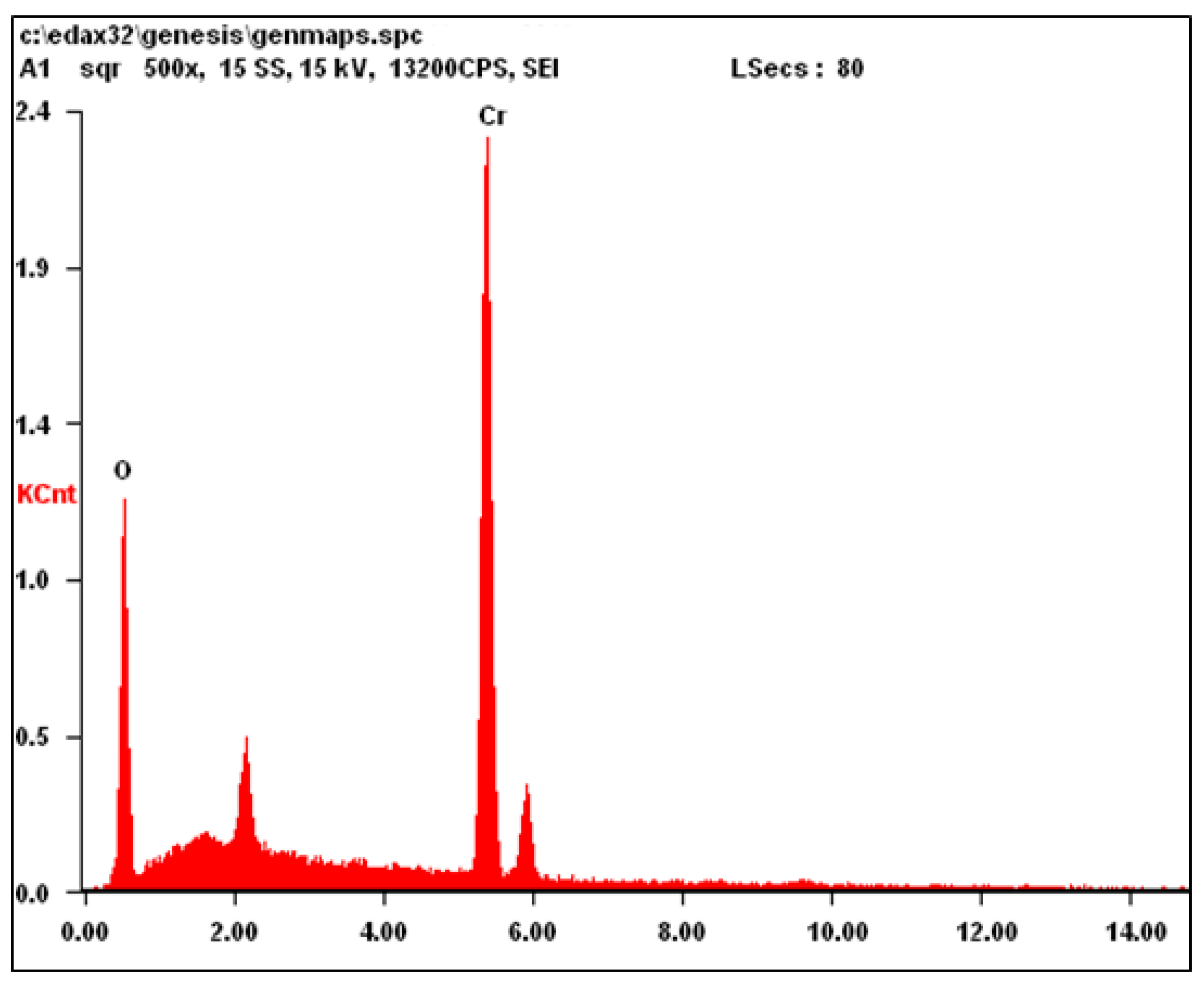
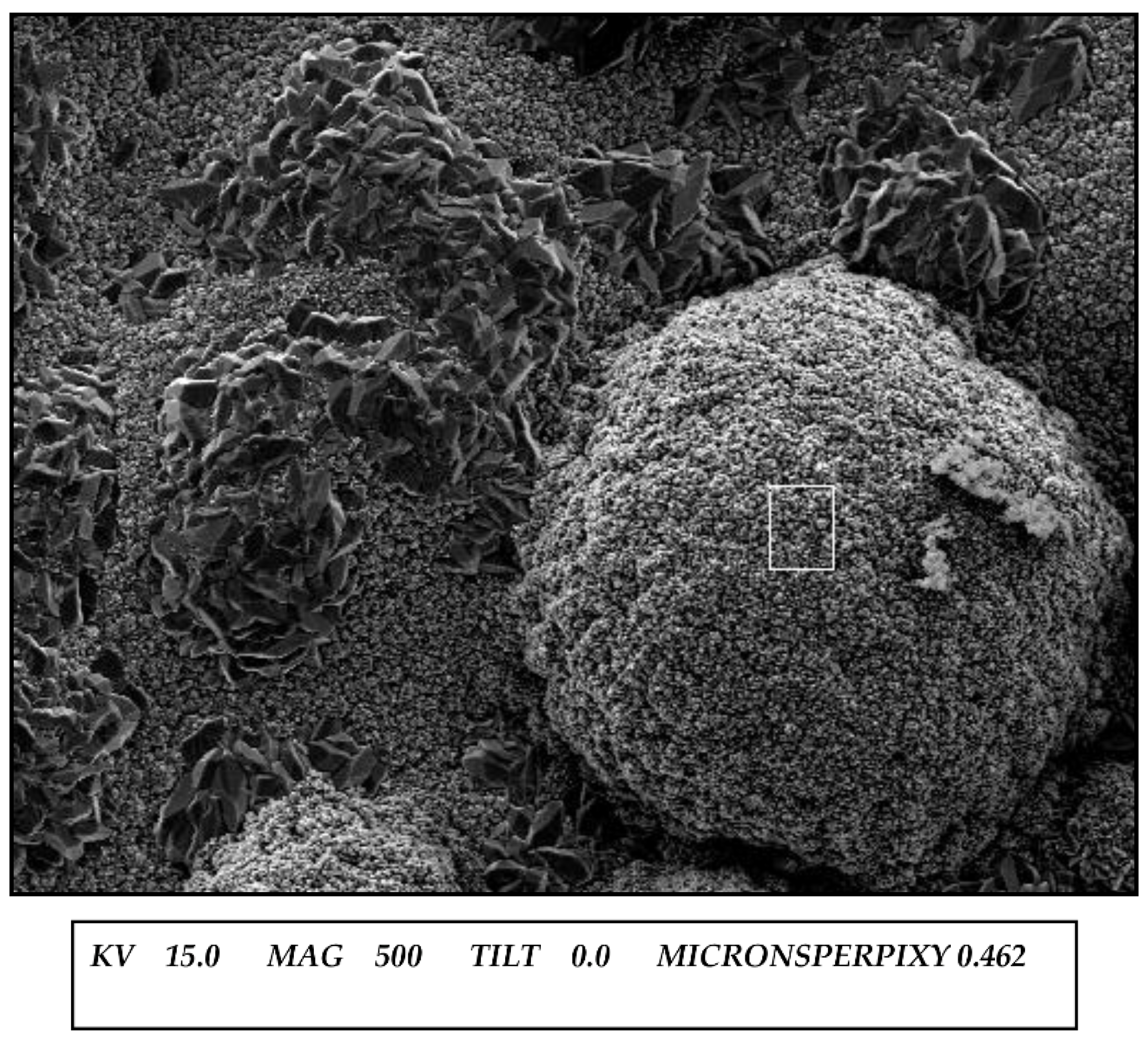
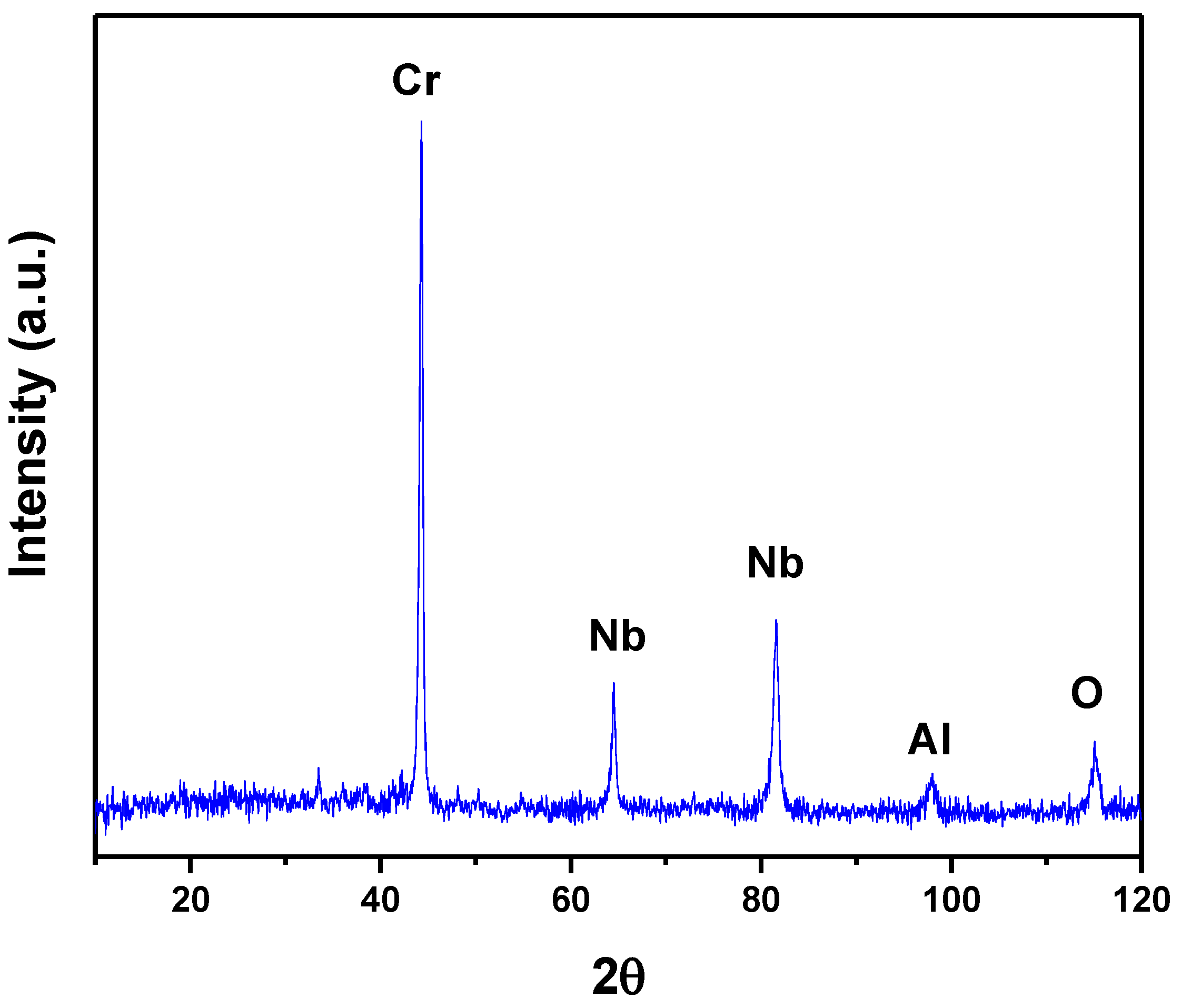
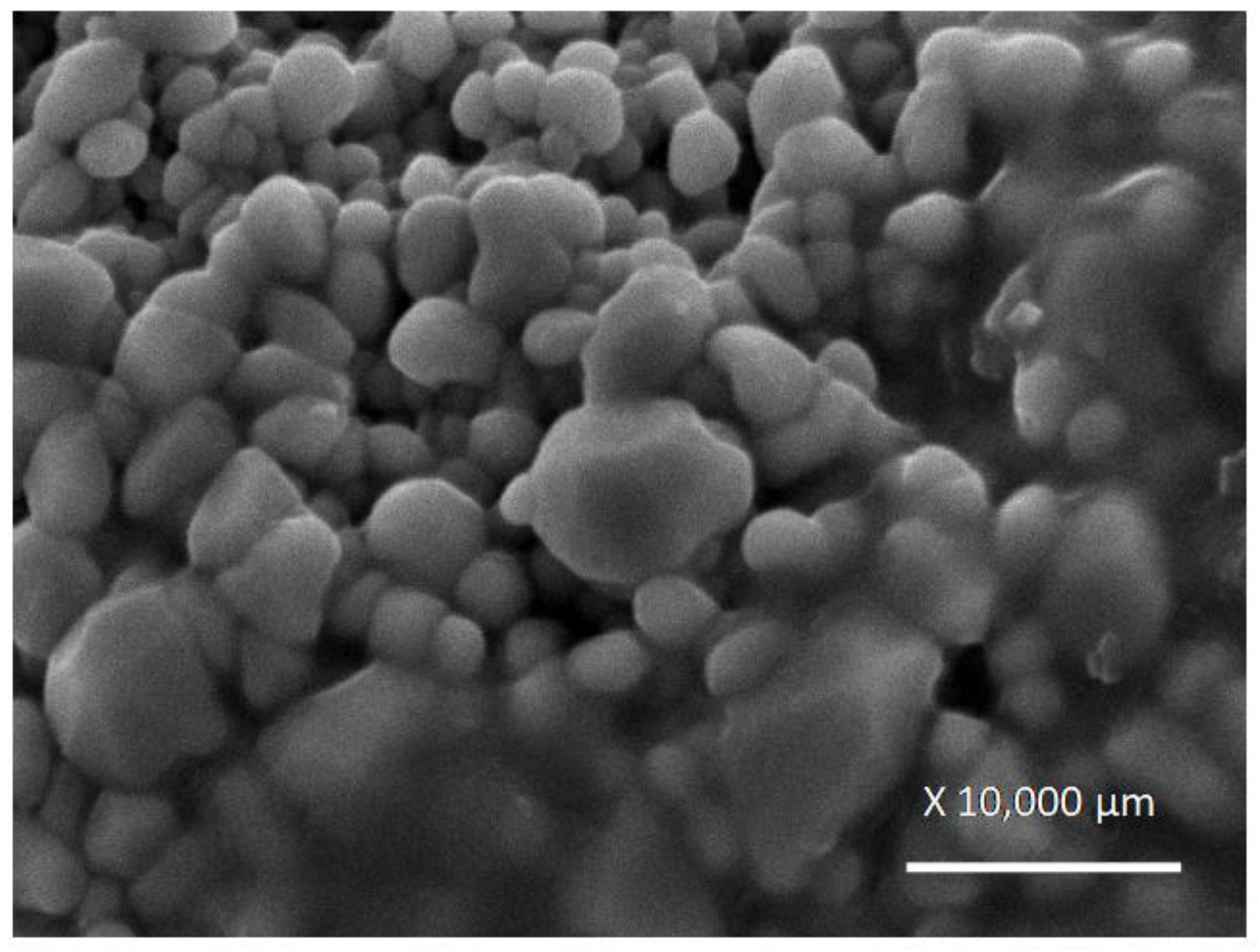

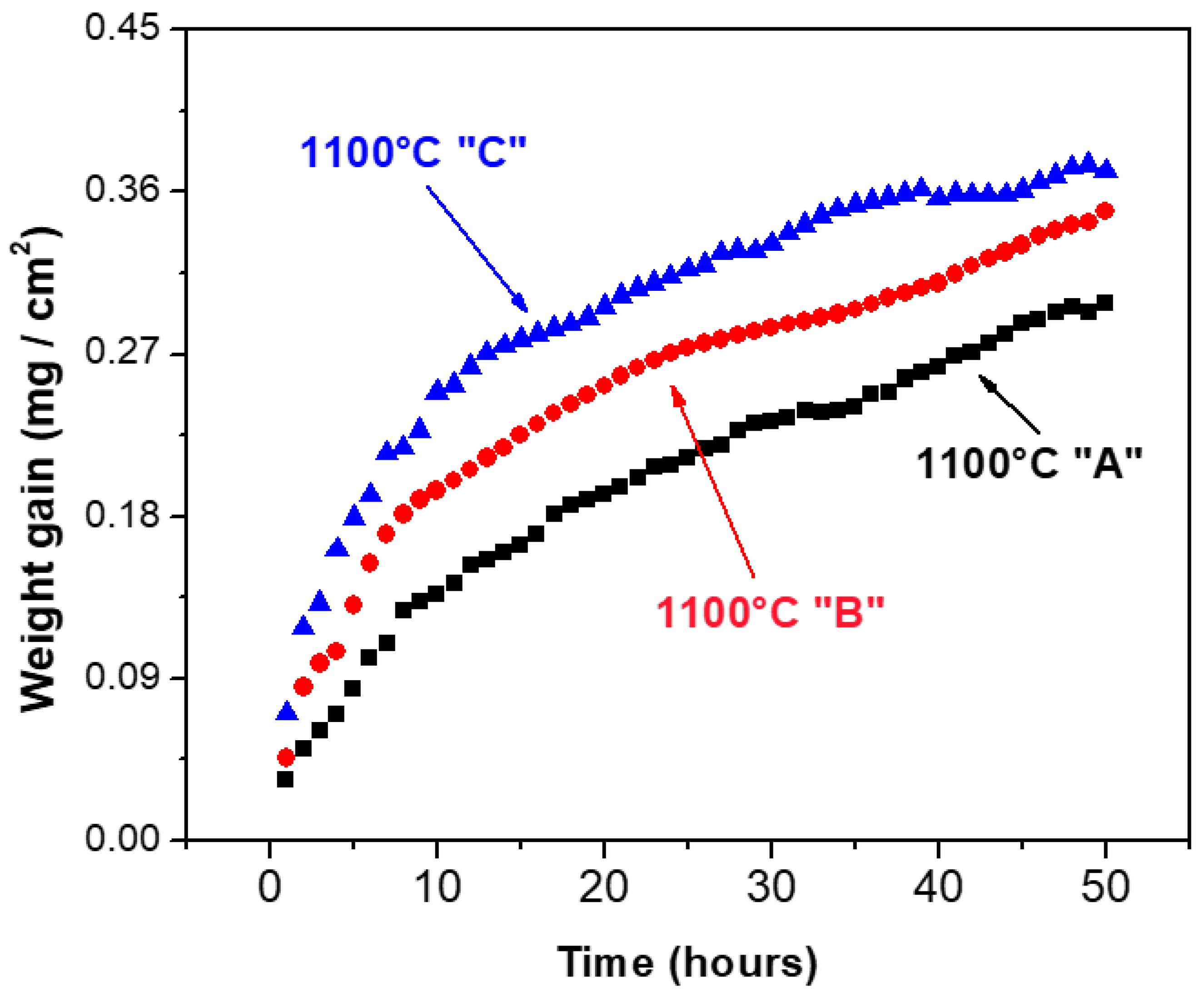
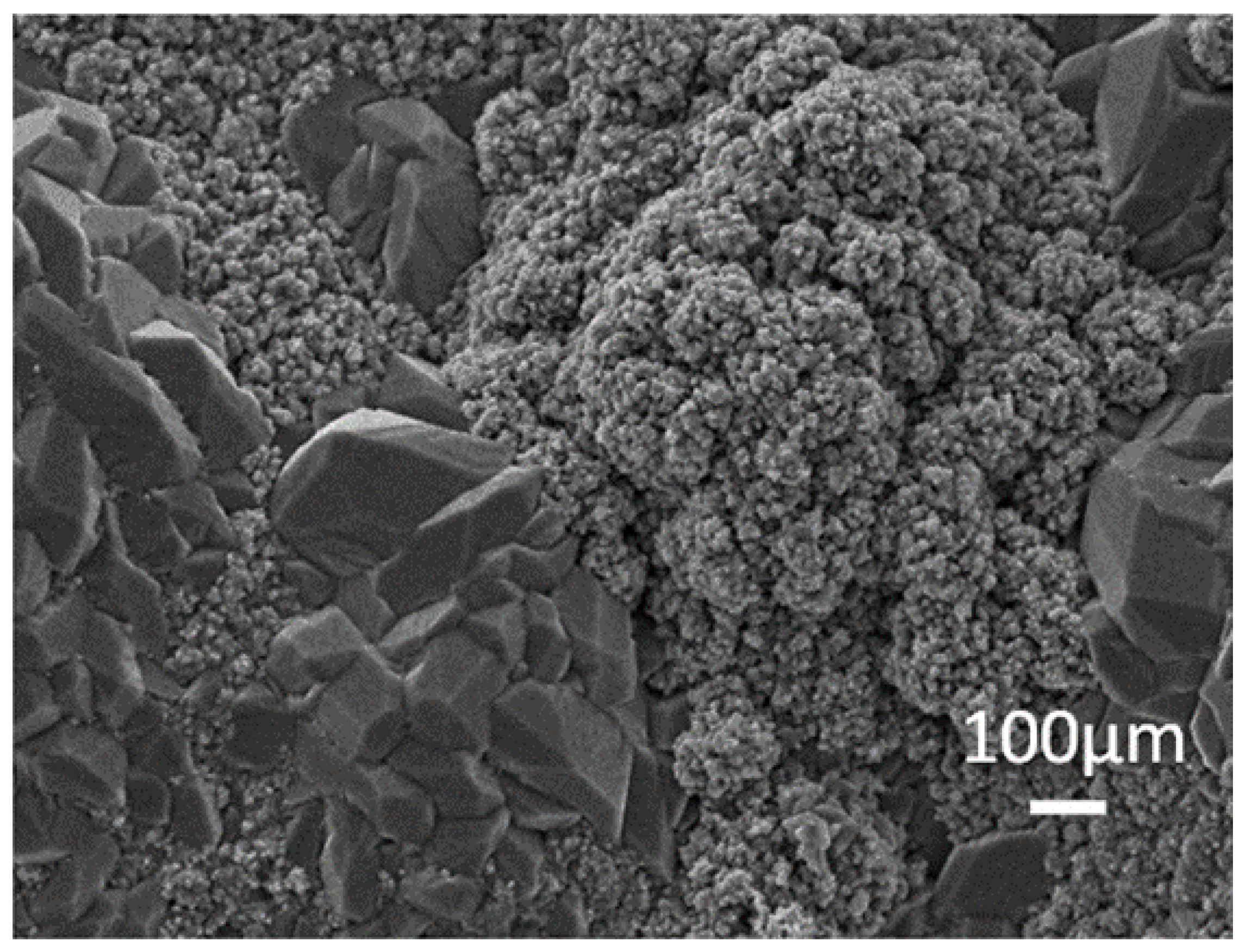
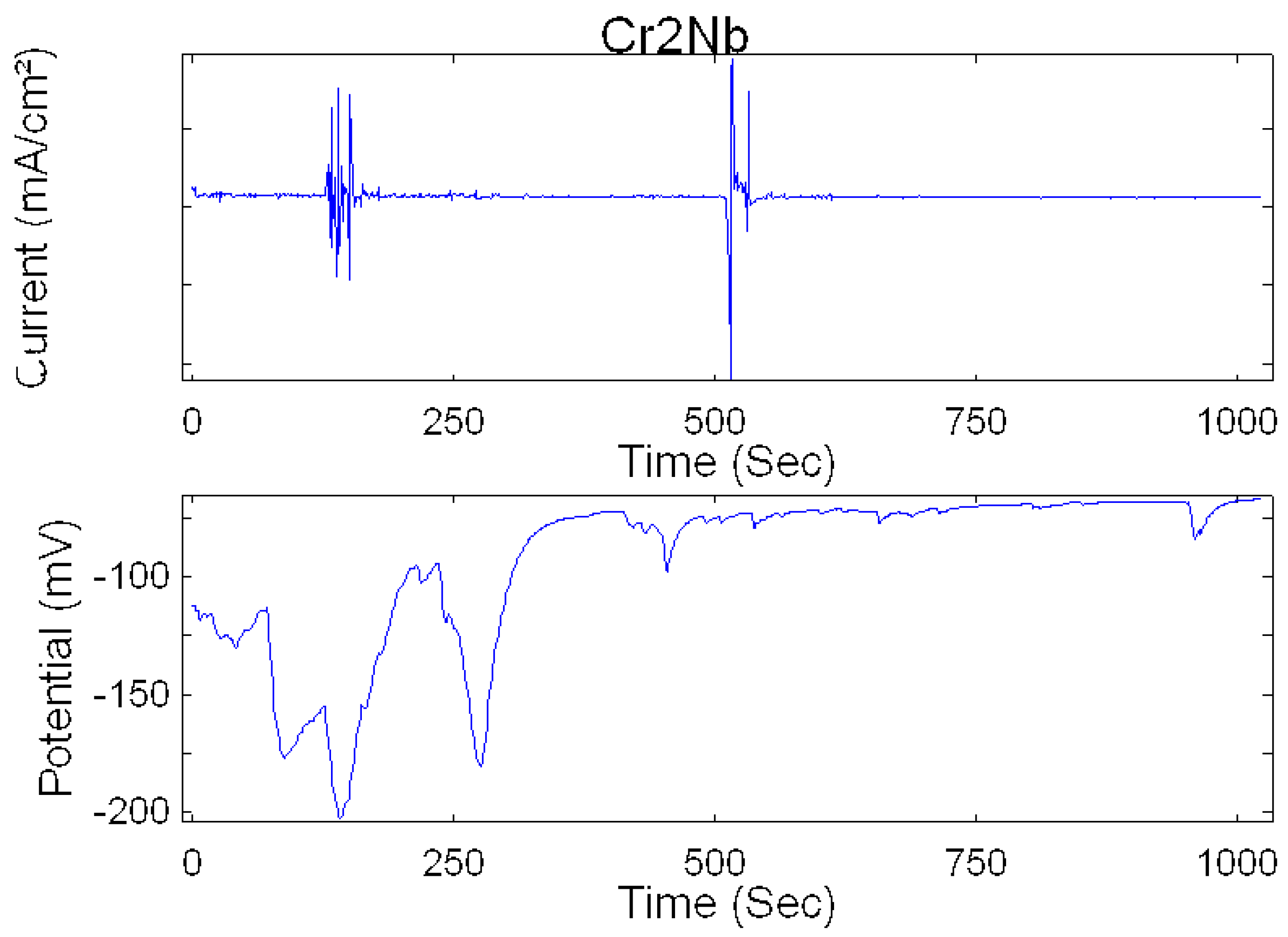
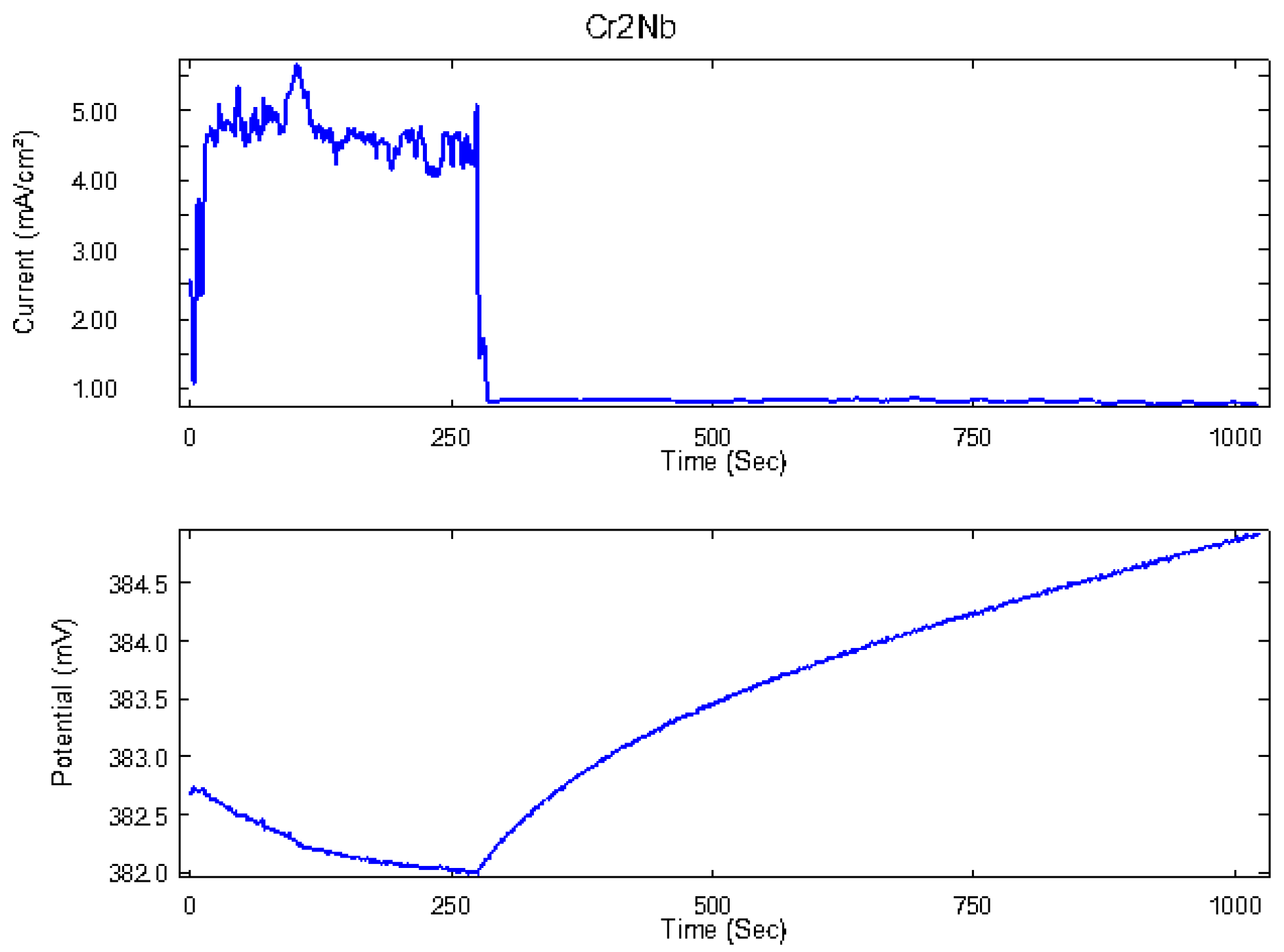


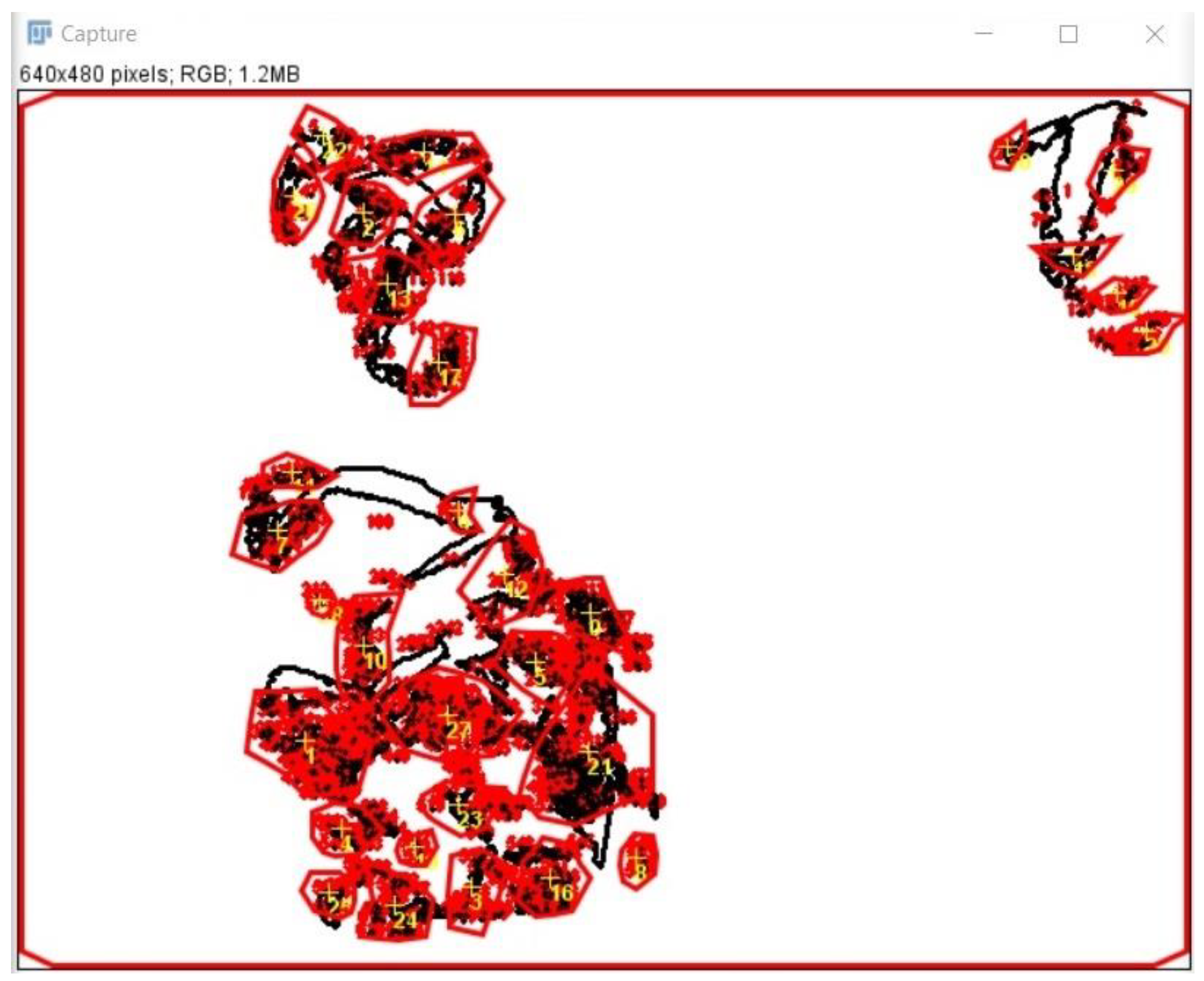
| Volume | Density | Milling Intensity (h) SPS |
|---|---|---|
| 0.3935 cc | 7.2485 g/cc | 0 h |
| 0.3935 cc | 7.5317 g/cc | 8 h |
| 0.3925 cc | 7.6733 g/cc | 20 h |
Publisher’s Note: MDPI stays neutral with regard to jurisdictional claims in published maps and institutional affiliations. |
© 2022 by the authors. Licensee MDPI, Basel, Switzerland. This article is an open access article distributed under the terms and conditions of the Creative Commons Attribution (CC BY) license (https://creativecommons.org/licenses/by/4.0/).
Share and Cite
Nava-Dino, C.G.; Flores-De los Ríos, J.P.; Maldonado-Orozco, M.C.; Sánchez-Carrillo, M.; Bautista-Margulis, R.G.; Delgado, A.D.l.C.; Almeraya-Calderón, F. Electrochemical Noise Response of Cr2Nb Powders Applying Mechanical Alloying. Crystals 2022, 12, 482. https://doi.org/10.3390/cryst12040482
Nava-Dino CG, Flores-De los Ríos JP, Maldonado-Orozco MC, Sánchez-Carrillo M, Bautista-Margulis RG, Delgado ADlC, Almeraya-Calderón F. Electrochemical Noise Response of Cr2Nb Powders Applying Mechanical Alloying. Crystals. 2022; 12(4):482. https://doi.org/10.3390/cryst12040482
Chicago/Turabian StyleNava-Dino, Claudia Georgina, Juan Pablo Flores-De los Ríos, Maria Cristina Maldonado-Orozco, Mario Sánchez-Carrillo, Raul German Bautista-Margulis, Anabel De la Cruz Delgado, and Facundo Almeraya-Calderón. 2022. "Electrochemical Noise Response of Cr2Nb Powders Applying Mechanical Alloying" Crystals 12, no. 4: 482. https://doi.org/10.3390/cryst12040482
APA StyleNava-Dino, C. G., Flores-De los Ríos, J. P., Maldonado-Orozco, M. C., Sánchez-Carrillo, M., Bautista-Margulis, R. G., Delgado, A. D. l. C., & Almeraya-Calderón, F. (2022). Electrochemical Noise Response of Cr2Nb Powders Applying Mechanical Alloying. Crystals, 12(4), 482. https://doi.org/10.3390/cryst12040482







